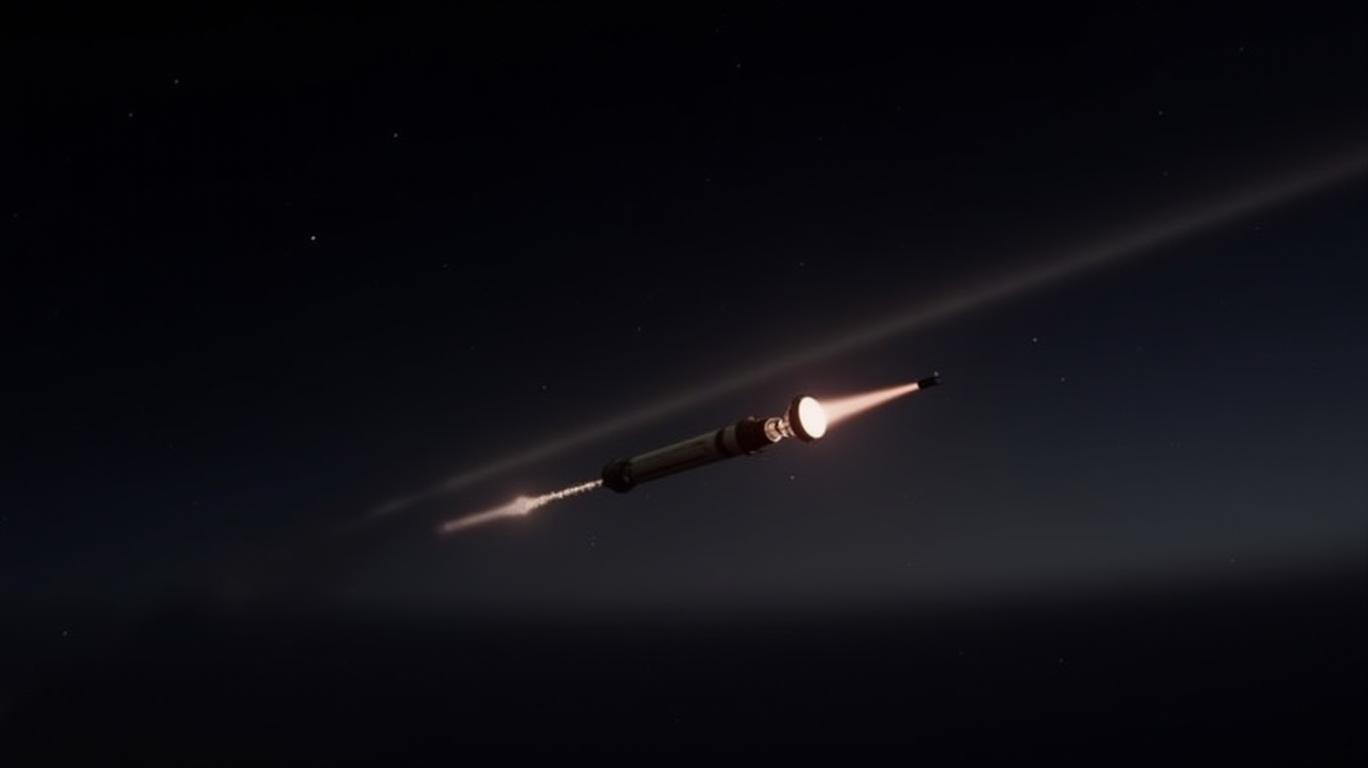Sonic Boom as Signal: Why SpaceX's Scalable Logistics Are Disrupting Aerospace
The thunderous
boom that rattled Southern California on May 24, 2025, was more than a fleeting noise—it was a clarion call of SpaceX's ascendancy in commercial space logistics. The Dragon spacecraft's return from the International Space Station, accompanied by its supersonic reentry, underscored the company's ability to execute complex missions at scale. This event marks not just a technical milestone but a strategic shift in how aerospace logistics will be managed in the coming decade. For investors, the message is clear: SpaceX is not just a player in space—it's redefining the rules of the game.
Operational Scalability: The Engine of Disruption
SpaceX's Dragon spacecraft is the only vehicle capable of returning large cargo loads from the ISS—a capability that has become a lifeline for scientific research. The May 2025 mission, part of the 32nd Commercial Resupply Services (CRS-32), carried 6,700 pounds of supplies and returned research samples worth millions in data. Crucially, this mission was executed just five days before the next launch (CRS-33), demonstrating a cadence that rivals traditional air or maritime logistics networks.
The data reveals a trajectory of exponential growth. With 90+ launches planned from Vandenberg Space Force Base by 2026, SpaceX is not merely “scaling up”—it's establishing a new baseline for what's possible in space logistics. Competitors, such as Boeing's Starliner, lag in both frequency and cost efficiency, leaving SpaceX to dominate the $20 billion market for ISS resupply and satellite deployment.
Market Disruption: The Tipping Point
The true disruption lies in SpaceX's reusable technology. The Dragon's return to Earth—and its ability to be refurbished for repeat missions—slashes costs to a fraction of expendable alternatives. This model is now being exported to orbital launch systems, where the Starship program aims to reduce payload costs to $10/kg, a fraction of today's $5,000/kg average.
Investors should note:
- Unmatched Vertical Integration: From rocket engines to ground infrastructure, SpaceX controls its supply chain—a rarity in aerospace.
- Regulatory Momentum: While sonic booms draw public scrutiny, the U.S. Space Force's Environmental Impact Statement (EIS) process is moving forward, with trajectory adjustments and acoustic studies paving the way for scaled operations.
- Strategic Partnerships: NASA's reliance on Dragon for crew and cargo, combined with growing commercial clients like OneWeb, solidifies SpaceX's monopoly on high-value launches.
The Regulatory Landscape: A Speedbump, Not a Wall
Critics cite sonic booms and environmental concerns as risks. Yet SpaceX's proactive engagement—with public notifications, acoustic research, and trajectory optimizations—reveals a company that treats regulations as solvable challenges, not existential threats. The EIS process, while lengthy, is a routine hurdle for any major infrastructure player. Meanwhile, competitors face far greater regulatory and technical barriers to entry.
The gap is widening. While legacy firms stagnate, SpaceX's valuation now exceeds $175 billion—a testament to investor confidence in its disruptive model.
Investment Thesis: Buy the Boom
The sonic boom is a sound of inevitability. SpaceX's dominance in reusable spacecraft and launch infrastructure positions it to capture 70%+ of the $1.1 trillion space economy by 2040. For investors, the opportunity is twofold:
- Direct Exposure: SpaceX's upcoming IPO (anticipated by 2026) will offer shares in a company with a stranglehold on critical space logistics.
- Ecosystem Plays: Suppliers like Aerojet Rocketdyne (AJRD) and satellite operators like Planet Labs (PLSS) benefit from SpaceX's launch capacity.
The risks? Regulatory delays or technical setbacks. But with a 95% mission success rate over 200+ launches, SpaceX's execution record is unmatched. The May 2025 incident, while alarming, also showcased its transparency and preparedness—key traits for long-term investor confidence.
Final Call: The Next Moonshot
The sonic boom is a reminder: The space age is no longer about distant dreams. It's about today's logistics networks, built by a company that treats Earth's atmosphere as a bridge, not a barrier. For investors, the question isn't whether to bet on SpaceX—it's how soon. The next generation of space commerce will be launched by this disruptor. Don't miss the rocket.
Harriet Clarfelt's signature style blends deep technical analysis with a call to action. Here, the focus is on SpaceX's operational prowess and its unassailable lead in scaling space logistics—a disruption that's already in motion.

Comments
No comments yet